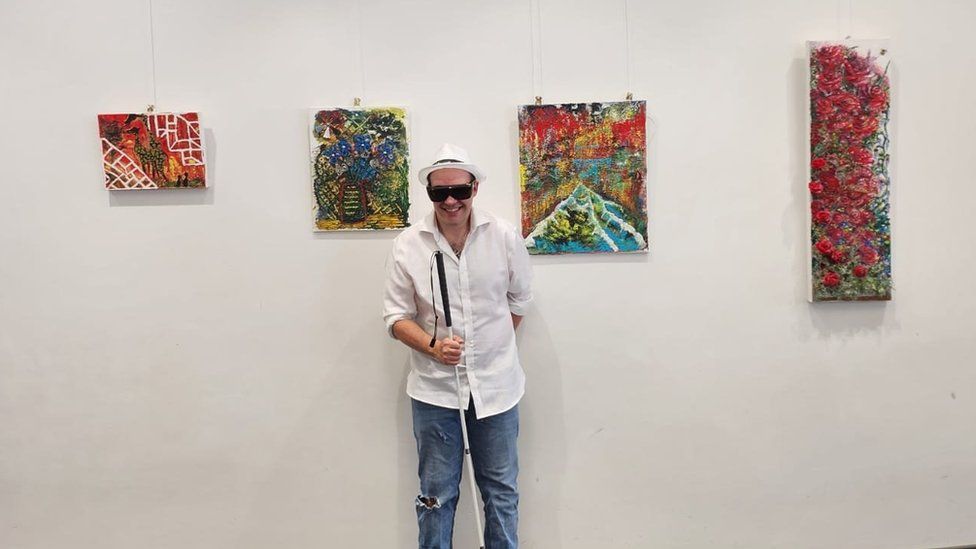Buckinghamshire man with sight loss leaves artwork to strangers
- Published

A man who lost his sight due to an inherited eye condition said making art and gifting it to strangers had turned his life around.
Adrian Paternoster was diagnosed with Retinitis Pigmentosa (RP) after he noticed he kept bumping into things.
The 31-year-old, from Watermead near Aylesbury, Buckinghamshire, recalled he was becoming "more clumsy, but I was just laughing it off".
He has since focused on making art "to make other people happy".
Mr Paternoster does not make money from his work, but instead leaves his completed canvases near local landmarks for people to find.
He said sharing his work gave him "pure happiness".
"That to me is more valuable than money, to make other people happy," he said.
Mr Paternoster also sells or auctions his work to raise money for sight loss charities.
The Royal National Institute of Blind People (RNIB) explains on its website that RP is "the most common" of inherited retinal dystrophies.
It is usually diagnosed in young adults, but can be discovered in children and people aged in their 50s.
People experience a gradual loss of vision as cells in their eyes stop working.
There is currently no cure for the inherited condition, although sight loss charities fund ongoing research into new treatments.
Mr Paternoster was diagnosed in January 2023, but first noticed symptoms in 2021.
The former care home worker found he was bumping his head at work and being dazzled by lights while cycling.
He said: "I became a little bit off balance and more clumsy, but I was just laughing it off."
After his diagnosis, the 31-year-old said his "mental health went from 100 to 0 in a brief moment".
His wife bought him pastels and urged him to "mess about with the colours" to feel better.
"I said, 'I don't want to do it', and I refused," said Mr Paternoster. "But she convinced me to do it, and now I feel if I wasn't doing art I don't think I'd be here."
If you are struggling with your mental health, links to organisations that offer support can be found at BBC Action Line.
However, Mr Paternoster said his doctors had told him that making his artwork had strained his eyes and accelerated his sight loss.
He is now completely blind in his left eye, so has stopped making pastel art and instead focuses on paint pouring, "which is less strain".
It involves pouring paint on to a canvas and adding details after it dries.
Through his work, he hopes to show other people "you can make the impossible into the possible", and dreams of one day having his work hung in the Tate.
Follow East of England news on Facebook, Instagram and X. Got a story? Email [email protected] or WhatsApp 0800 169 1830
- Published13 January 2023
- Published19 November 2023
- Published21 July 2022